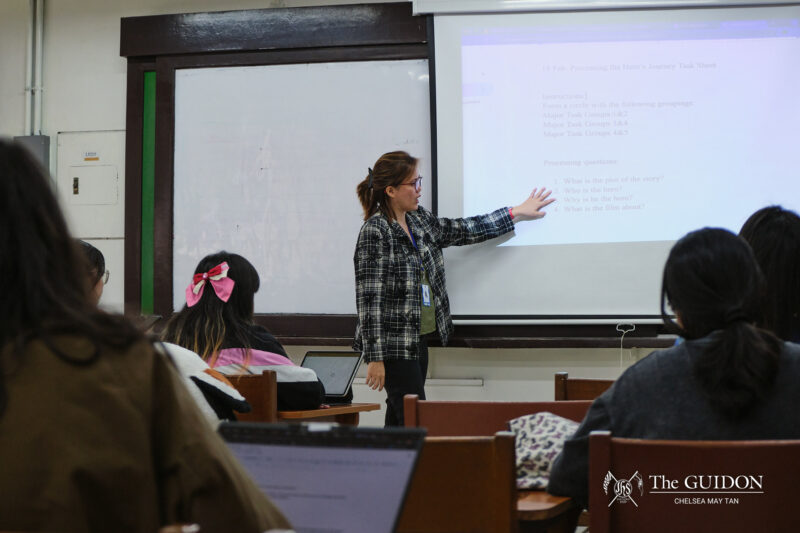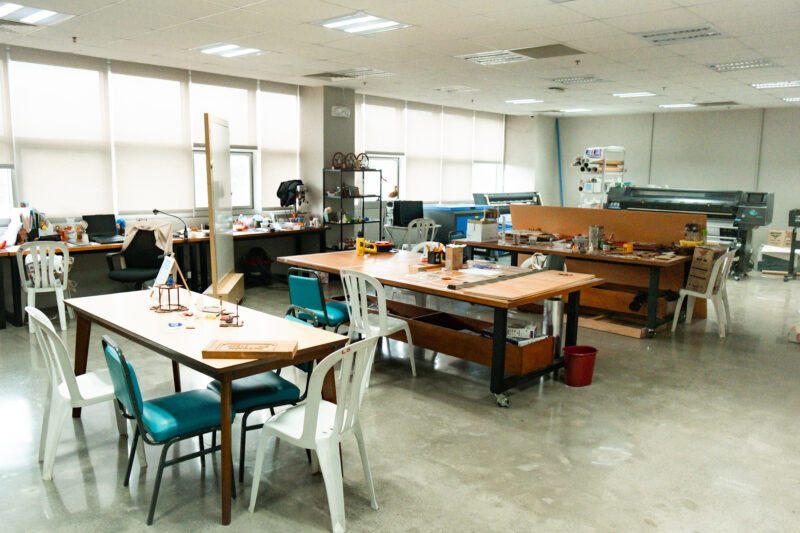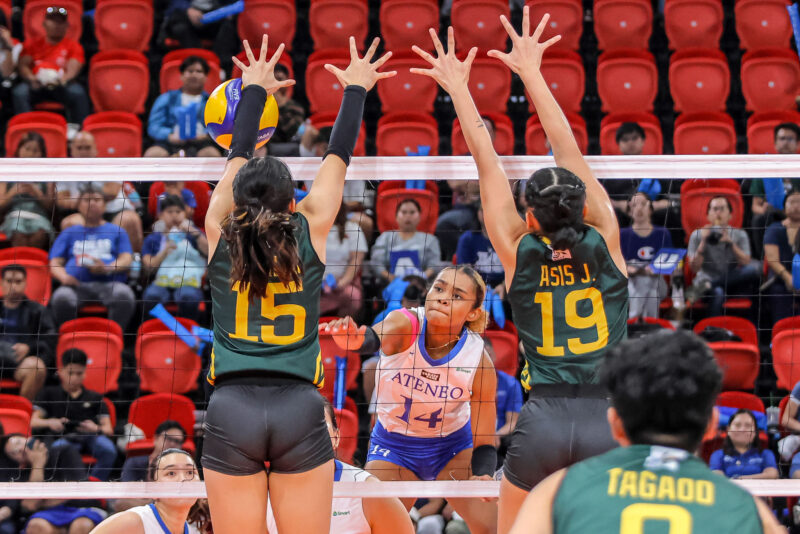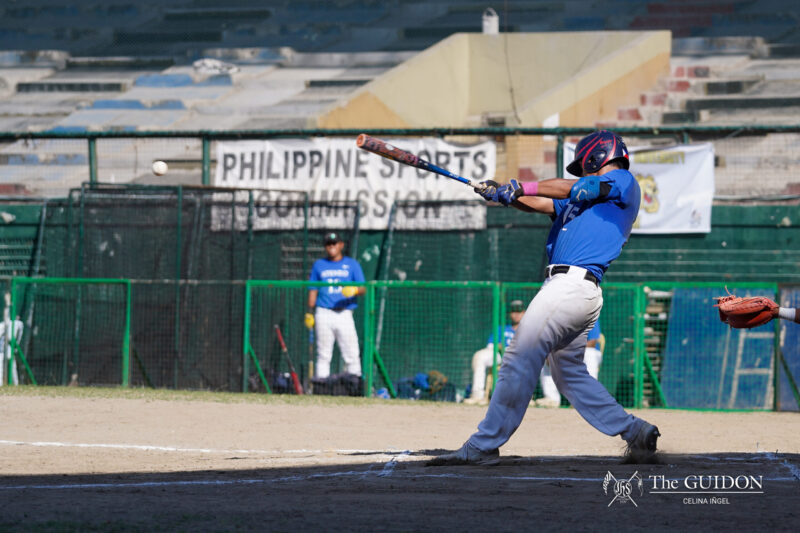There is noise and chaos at first, and they spend 10 minutes figuring out how to arrange the tables to best hold the meeting. There are three rectangular tables placed parallel to each other. They come to a joint decision: They will arrange these tables in a U-shape. Everyone shuffles. The tables are ready. Everyone settles down. The noise simmers.
This was the setting of the Sanggunian room last March 5. It was 2:30 PM. The occasion was an emergency meeting among outgoing and incoming officers of the Sanggunian, and they had a deadline. In two hours would be their meeting with Chris Castillo, director of the Office of Student Activities (OSA), and they were to discuss what action they were going to take regarding the institution of the Sanggunian in the wake of the failure of elections. It was imperative that everyone in the Sanggunian would be on the same page during the meeting.
During this emergency meeting, however, the officers of the Sanggunian are hardly on the same page yet—they seem to be chapters and chapters apart sometimes, but they are all on the same book.
Majority of the Top 44 seats remain unoccupied, including the positions of president, vice president, secretary-general and finance officer. What, then, is the next step for the Sanggunian? How will this institution function, when it has so many parts missing?
Proposals
During the meeting, several proposals are floated. Mawe Duque, who is currently John Gokongwei School of Management Central Board representative, and who was a presidential candidate in the 2015 General Elections, brings up Article XVIII of the 2005 Constitution of the Undergraduate Students of the Ateneo de Manila Loyola Schools.
Section 1 states, “To facilitate the transition of powers within the Sanggunian after this constitution’s ratification: All incumbent elected members of the Sanggunian shall remain in office until after the newly-elected set of Sanggunian officers shall have taken their oaths of office.” Duque says that this may be interpreted to mean that, because there is no “newly-elected set of Sanggunian officers,” the incumbents will holdover and they can retain their positions.
This suggestion is not met favorably, with everyone in the meeting disagreeing and everyone—including Duque—eventually voting against it. Christian Union for Socialist and Democratic Advancement Premier Abbo Hernandez, who was also at the meeting, says that nothing in the Article XVIII stipulates that this transitory provision holds even during the event of a failure of elections.
Additionally, Madel Callanta, incumbent School of Humanities Junior Central Board (CB) representative and candidate for School of Humanities Sanggunian chairperson during last month’s elections, expresses that interpreting the constitution this way is essentially misinterpreting it. “We won’t be playing by the rules, but with the rules,” she said.
A course of action that the people in the meeting unanimously agreed on is a Constitutional Convention (Con-Con), but they disagreed on the extent of changes that the Con-Con would allow. Some suggested a complete a restructuring of the Sanggunian—having a parliamentary government instead, for example. This proposal comes from the belief that the problem with the Sanggunian is in the very institution: That the Sanggunian’s problem is one of structure.
CJ Leong, School of Science and Engineering sophomore CB representative and secretary-general candidate during the 2015 General Elections, says that she did not want changes made during the Con-Con to be drastic. “We’ve never seen Sanggu function the way it should as written in [the Constitution],” she says. To her, this means that the problem is that the seats in the Sanggunian do not get filled. Because of this, the problem of the Sanggunian may not be its structure, but the fact that a lot of positions remain vacant. She suggests minimal changes instead, like abolishing quota.
Regardless of whether or not the changes made during the Con-Con will be grave, this is the course of action everyone is willing to take, especially given the coming five-month period the Loyola Schools (LS) will not be having class, due to the academic calendar shift.
A question of mandate
“My question is,” Duque opens, “At the same time as Con-Con, what are we going to do?”
Here, “we” refers to the rest of the Sanggunian who did not get elected. Duque says that he is “completely against” putting a halt to performing their duties as they wait for Con-Con to finish.
He argues, “If I’m not elected and I remain as a constituent, I will file [a complaint to the Student Judicial Court] for gross neglect of duty and say that you are not representing me.” He brings up that there are CB officers who got elected, and they must do their responsibilities, despite how the Top 4 positions remain vacant and how the school boards (SBs), except School of Science and Engineering (SOSE) Sanggunian, are mostly vacant, as well. He says, then, that the Sanggunian should proceed with doing their basic services and other functions.
To this, Hernandez says, “It remains in jurisprudence that you guys cannot stay in power.” He says that pushing through with the Con-Con only is fine. “For the next five months, you won’t have projects, but are you in the authority to do projects? None of you got elected. You can’t represent people without a mandate. What or who are you representing? And why are you pushing projects if nobody’s approving your projects, if you guys will stay in power?”
He suggests that those who want to help the Sanggunian carry out its duties to the student body may volunteer for the Con-Con or run for positions in the Sanggunian again next year. Without a mandate, the most the outgoing Sanggunian officers can do now is volunteer for projects enacted by those who got elected.
SOSE Sanggunian, however, is the only SB that has a chairperson, a secretary-treasurer, and several CB officers and executive officers. SOSE SB Chairperson Luigi Del Rosario and the rest of his SB unanimously decided to carry out their platforms.
It is on this note that they end the emergency meeting, and file out of the room to attend their meeting with OSA.
The tables stay in their U-shape.
The convention
Weeks after this emergency meeting, the Con-Con has been moving with development studies junior Shiph Belonguel at its helm. Recently, it opened applications to be part of its central team. However, it is really too early to tell what kind of changes the Con-Con will make.
On what specific problems she wants to address, Belonguel says, “People can say a lot about what is wrong with Sanggu, but they’re all gut feel. We have no way to prove anyone’s claims. So right now, a big bulk of our summer will be dedicated to research and talking to key stakeholders.” Without knowing where the Sanggunian’s problems truly lie, it will be difficult to move forward with the Con-Con. At present, efforts are going into preliminary research and identification of “key stakeholders.”
What is sure, however, is that this Con-Con will still have to work on the current constitution (instead of creating whole new one) because they cannot displace the elected Sanggunian officers. Belonguel is also already sure of the composition of the teams that she wants to work on the Con-Con.
“Also, we started with identification of various sectors that we want to get involved in the Constitutional Convention, the actual delegation. We already have a composition of what we want the Constitutional Convention to look like.” She mentions 40 delegates and where she wants them to come from: Council of Organizations in the Ateneo clusters, the student parties, the general populace, and so on. These delegates are expected to propose, review and vote on amendments to the Constitution.
Ideally, the central team—the team tasked to do preliminary research for the Con-Con—will be working in April and May. June and July will be dedicated to the Con-Con delegates’ first, second and third readings of the constitution. By August, they should have already come up with amendments, and the plebiscite is slated to happen in September. “But that’s being really ideal about it,” Belonguel adds.
Although nothing specific can be said about what concrete changes will come out of this Con-Con, Belonguel makes its aims clear: “The aim of the Constitutional Convention is hopefully to enable a Sanggunian that is truly representative of the student body. I still think a well-functioning Sanggunian is still the best way to do that.”
The fight
After the emergency meeting, one quote rings in the empty Sanggunian room.
Hernandez had said, “‘Pag sinabi niyong magagalit sila kasi walang representation—hindi nga sila bumoto, so wala silang paki sa SB (If you say that the student body will be angry because they are not being represented—they did not vote, so they do not care about the SBs).” He pauses. “We all really just failed. That’s it.”
Before the outgoing and incoming Sanggunian officers settle comfortably on the decision to have a Con-Con, there was another proposal: To leave the situation as it is. To not do anything. It is the easier thing to do, and this whole problem—the problem that majority of the seats in the Sanggunian are unoccupied, and the Sanggunian will not be able to function as it should—is what the student body wanted anyway. The student body mandated next year’s vastly empty Sanggunian. It mandated its lack of student representation.
Second Year John Gokongwei School of Management CB Representative Jared Sarmiento says the absence of next year’s Sanggunian may even be the opportunity to teach the LS student body, once and for all, that the Sanggunian is significant and important.
However, not one officer—outgoing or incoming, and not even Sarmiento himself—can bring himself or herself to just let the problem be.
To many LS students, the Sanggunian may be a broken institution or an irrelevant government or a number of many other things, but this is what it definitely is: A group of students working to represent their fellow students, even when they are not mandated to.
What all this goes to show is a Sanggunian that is fighting for a Sanggunian even when its constituents do not. With the Con-Con just around the corner, maybe it is time that we do.








lollolollololol
“How will this institution function, when it has so many parts missing?” Sanggu is just one of the many legs of the student body. Though it will not function as well without it, I believe it can still stand. Sanggu hasn’t been doing THAT much anyway